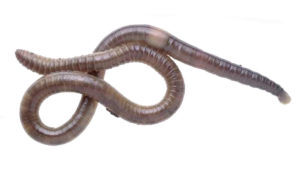Mar
27
2019
Jumping Worms & Other Invasives
 Our March speaker comes to us from the University of Illinois Extension Master Gardener program. Tricia Bethke not only gives talks for the Master Gardener Speaker’s Bureau, but gives presentations as a Morton Arboretum employee. She is a Forest Pest Outreach Coordinator at the Arboretum and co-authored the Management of Invasive Plants and Pests of Illinois guide.
Our March speaker comes to us from the University of Illinois Extension Master Gardener program. Tricia Bethke not only gives talks for the Master Gardener Speaker’s Bureau, but gives presentations as a Morton Arboretum employee. She is a Forest Pest Outreach Coordinator at the Arboretum and co-authored the Management of Invasive Plants and Pests of Illinois guide.
According to the UofI Extension Invasive Species Alert: Jumping Worms:
Jumping worms, (Amynthas spp.) have recently been discovered in Illinois. This new invasive species was first identified in Illinois in 2015 in northern Illinois and in 2016 in southern Illinois. Jumping worms are earthworms native to East Asia. They also have been called crazy worms, Alabama jumpers, and snake worms.
Jumping worms are voracious consumers of organic material, which can affect soil quality. They breed quickly and eggs survive Illinois winters. Adults reach maturity in approximately 60 days, allowing populations to grow exponentially during the growing season. These worms are also capable of reproducing without mating.
Join us on March 28th at St. Andrews Lutheran Church — Northeast corner of Geneva Rd and Prince Crossing
Meeting Time:
6:45PM Refreshments
7:00PM Business Meeting
7:15PM Program
Mar
20
2019
By Barbara Darrah
I looked out the window this morning and saw an exquisite winter landscape. There was a new skim of snow over the old which reflected a bright blue sun filled sky . It is early in March and the latest polar vortex has our temperatures plunging and I am thinking of spring. Why? Because I know that under that dead -looking landscape, life is stirring. Microorganisms are busily enriching the soil. Roots are writhing and bulbs and corms are sleepily starting to move.
Also, I was at last week’s garden club meeting and felt the fervor starting to build in me to get out there, begin planting and enjoy the “Simple Pleasures” of the garden.
This is the time when I ‘m grateful that I live in the Midwest. I have had time to rest and regenerate my gardening genes (and jeans) and am itching to get started.
Dick and I visit other gardens during the summer and get ideas for “next year” but we often forget over the winter. Nina Koziol’s pictures reminded us of the glorious Cocoa Bean plants we saw at Cantigny . We also discussed putting some blue flowers over by the bee hive. We are thinking about more Japanese Forest Grass – much more. Out come the seed catalogues and here go our imaginations again.
Finally, I am going to make more efforts to stop weeding, sit back and enjoy the view – not only in our own garden but at Kruse House as well. We have convenient benches there and you might enjoy stopping in as well, especially this summer when the butterfly art appears. Ours is almost done and we have had lots of fun planning and putting it together . I read that butterflies might have originally been called flutter-bys and over time the initial letters were reversed. I love the image of them fluttering by.
With this image in mind, I hope that by the time you read this, I can truthfully wish all of you a Happy Spring.
Mar
20
2019
We are proud to announce that our West Chicago Garden
Club is now sponsoring a $500 scholarship for students, who reside in West Chicago, attend either West Chicago High School or St. Charles East High School and are pursuing a major in environmental fields of study, such as: Agronomy/agriculture, botany, conservation, environmental concerns, forestry, horticulture or landscape design/architecture. The application form can be found near the center of our home page under the “Forms” heading.
 Our March speaker comes to us from the University of Illinois Extension Master Gardener program. Tricia Bethke not only gives talks for the Master Gardener Speaker’s Bureau, but gives presentations as a Morton Arboretum employee. She is a Forest Pest Outreach Coordinator at the Arboretum and co-authored the Management of Invasive Plants and Pests of Illinois guide.
Our March speaker comes to us from the University of Illinois Extension Master Gardener program. Tricia Bethke not only gives talks for the Master Gardener Speaker’s Bureau, but gives presentations as a Morton Arboretum employee. She is a Forest Pest Outreach Coordinator at the Arboretum and co-authored the Management of Invasive Plants and Pests of Illinois guide. - Membership
- Membership